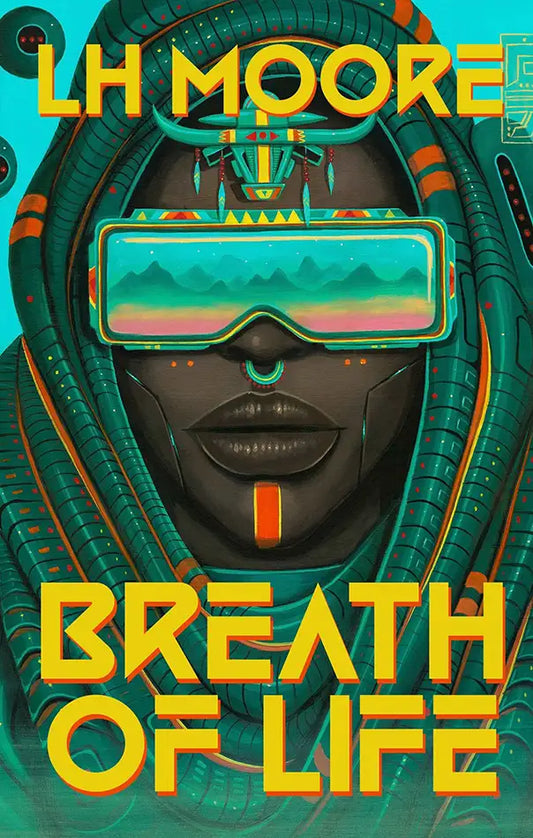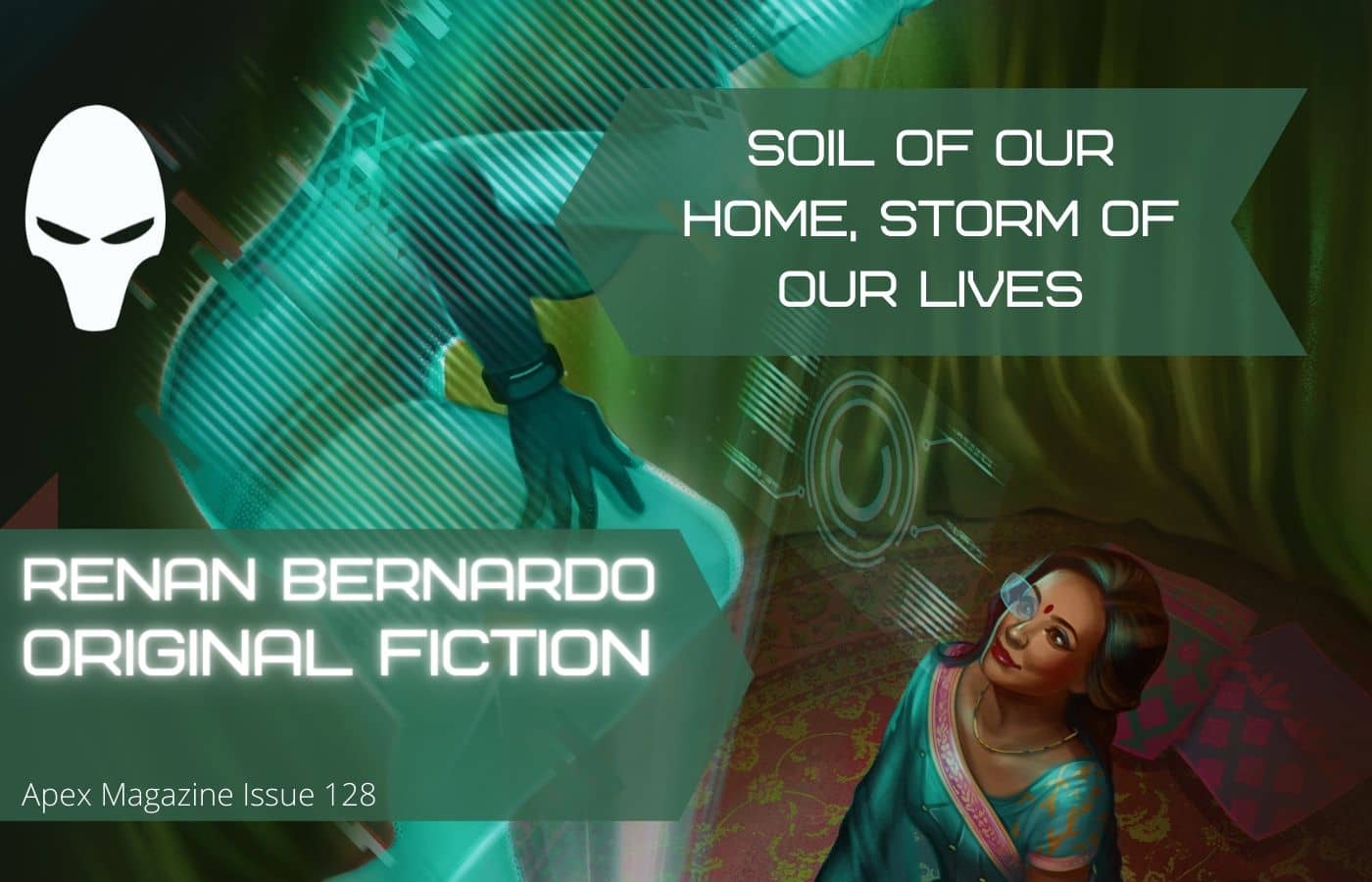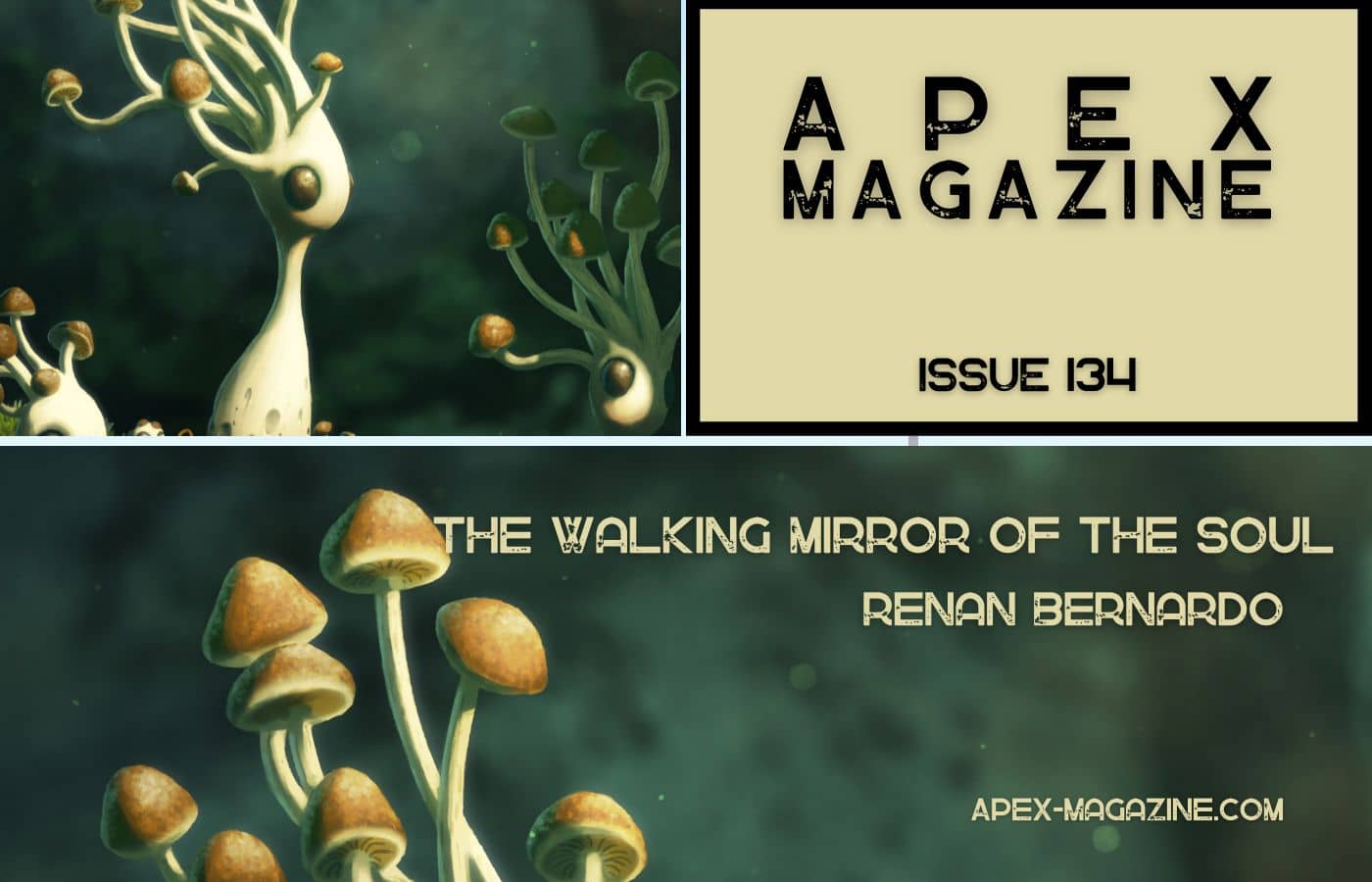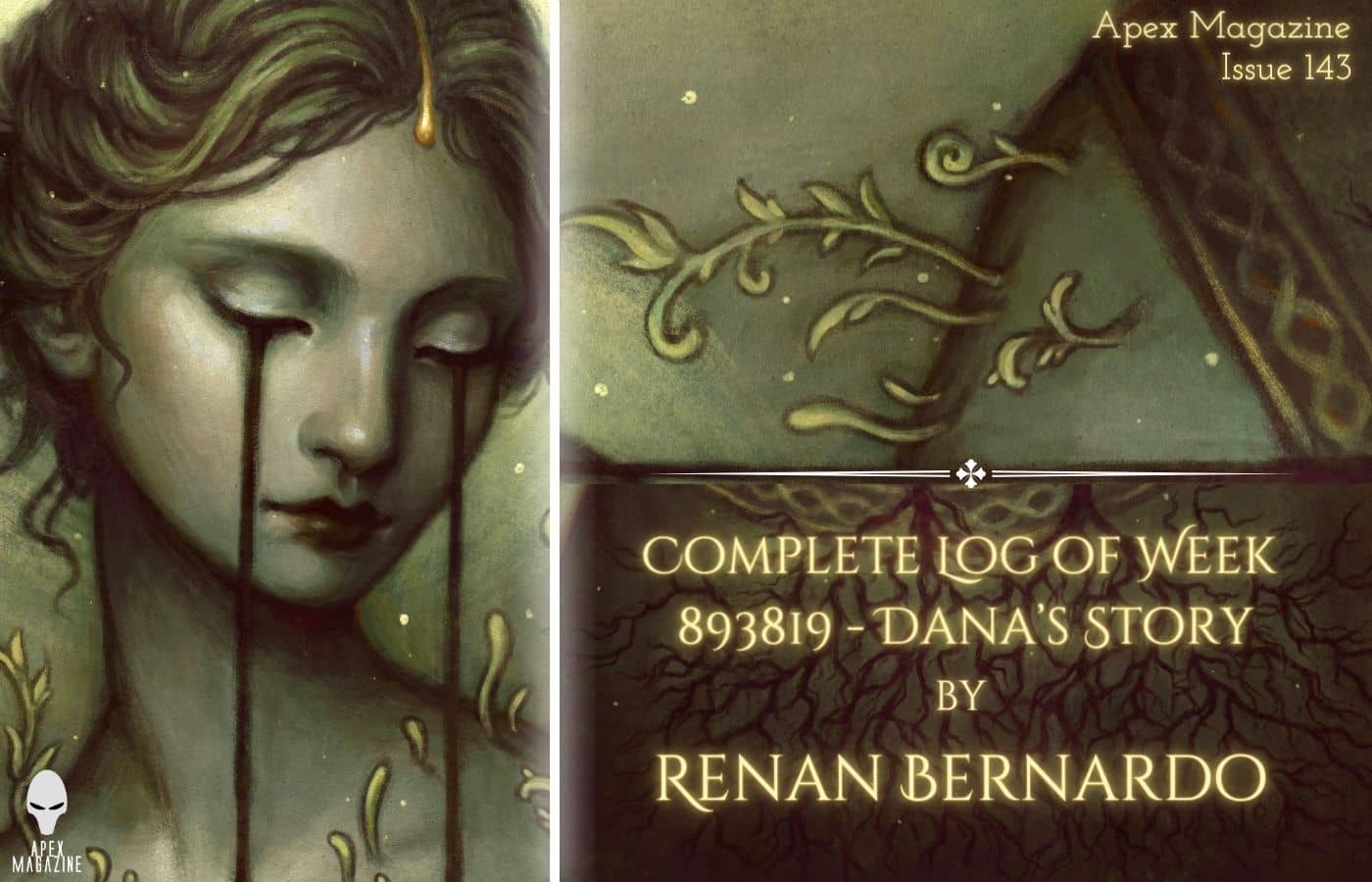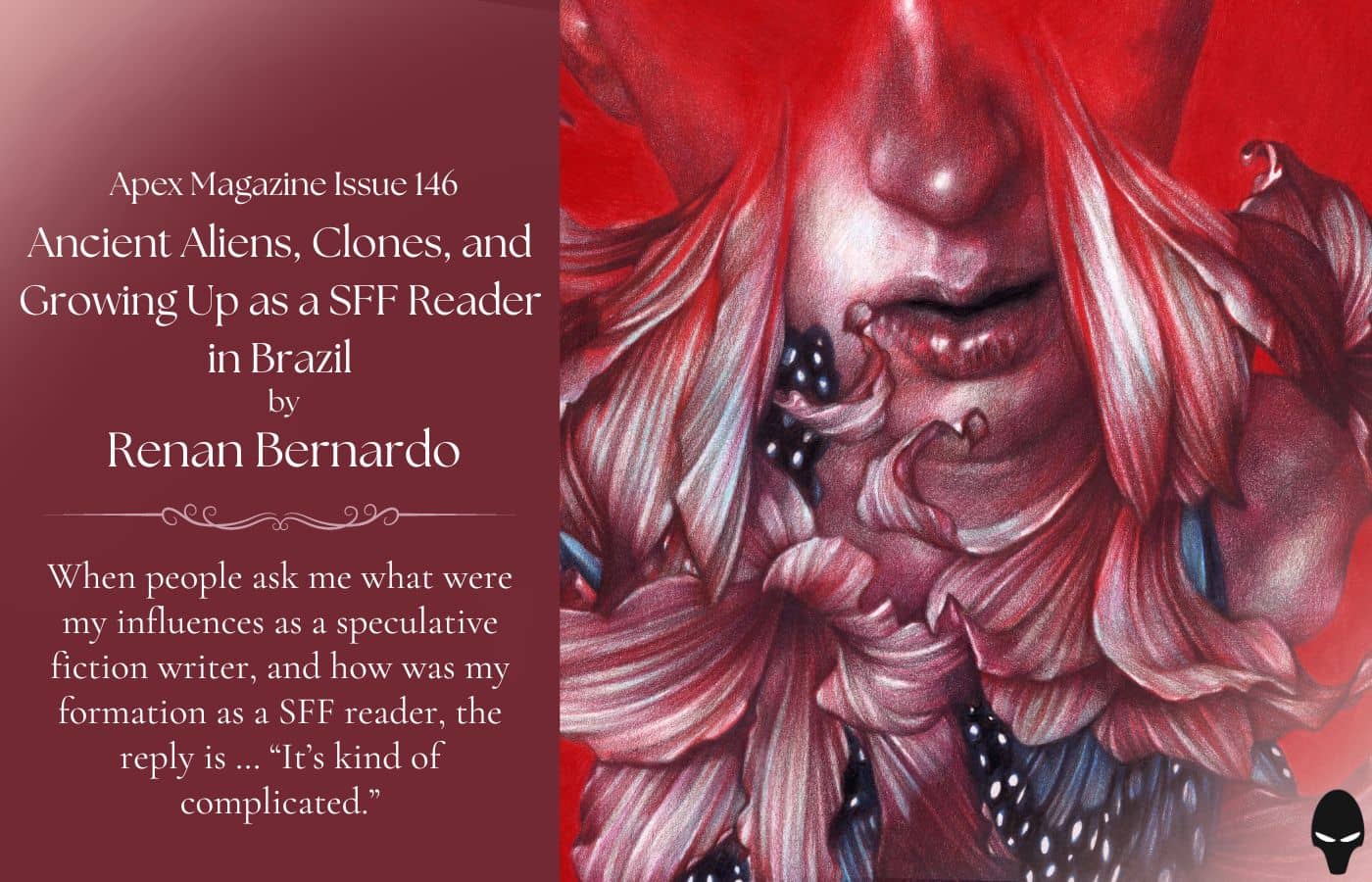
Isaac Asimov. Ursula K. Le Guin. Robert Heinlein. William Gibson. Philip K. Dick. If you’re in your mid-thirties and grew up in the US as an avid reader of science fiction and fantasy, you probably have them either as influences (if you’re a writer) or—at least a few of them—in your hall of favorite authors. If you grew up in Brazil, things were probably different.
You could find the usual share of those authors here in Brazil1, but not all of them, not in a great variety, and often many years after their stories were originally published. Neuromancer only had its first translation for Brazilian Portuguese in 1991, seven years after its publication. Alfred Bester never had an official translation to Brazilian Portuguese, while most of James Tiptree Jr.’s stories and Dan Simmon’s Hyperion only saw our beautiful shorelines in 2023. And I’m speaking of a colonized country that traditionally imports a lot of fiction from the US and UK, imposing on it more importance than in our own local artists to the point of making it hard to compete with English-speaking names. Even today, bookshelves almost anywhere have far more space for translated works (mainly from English) than for original Brazilian productions.
When people ask me what were my influences as a speculative fiction writer, and how was my formation as a SFF reader, the reply is … “It’s kind of complicated.”
I grew up seeing a lot of Tolkien, Rowling, King, and Pratchett (an incomplete and small selection of Discworld novels) on bookshelves all around. When it comes to speculative fiction, they were the big names everyone talked about. There were many exceptions that never got as much attention. Margaret Weis and Tracy Hickman’s Dragonlance novels (three of them only) also had their guaranteed corner in some bookstores. Fantasy dominated the bookshelves, mainly after the astounding success of Harry Potter and The Lord of the Rings in Hollywood. But you were sure to find Douglas Adams’s The Hitchhiker's Guide to the Galaxy and your limited pick of classic science fiction authors as well, even though many of them remained decades without new editions or reprints, and it was rare to see anything outside of their most famous classic novels.
But Brazil had its own production, with some important caveats. Speculative fiction has always been regarded as an “inferior” type of literature by the so-called literary circles, so in the 90s and early 2000s it was a small, shy niche. The exceptions were authors like André Vianco, who wrote vampire novels, and Eduardo Spohr, who wrote fiction inspired by Christian narratives. There was not much space for anything else when it came to the greater public. Years before, in the early 90s, we had our own translated and short-lived version of Asimov’s Science Fiction that also featured some local authors. All the while, for a long time, we had (and have) important names like Bráulio Tavares, Fábio Fernandes, Finisia Fideli, Roberto de Sousa Causo, Luis Bras, and others. However, those remained rather secluded in the niche and didn’t share the same readership and space on bookshelves as Vianco and Spohr. BIPOC authors? Women? Non-binary authors? Those were even rarer.
Leaping out of literature, Brazil had some famous telenovelas (soap operas) filled with speculative elements in the 1990s and early 2000s, a tradition that drew from the source of magical realism mixed with spiritism and traditional African and indigenous religions. O Clone (The Clone) was about a scientist who created a human clone. Porto dos Milagres (Port of Miracles) was about mystical happenings intermingled with politics in a fishermen’s town. O Beijo do Vampiro (Vampire’s Kiss) was a romantic comedy with vampires, witches, and mystical creatures. A Viagem (The Journey) was a dive into afterlife and the quest for eternal peace. They all were filled with elements to stir the imagination, something extremely important to the culture. Another important piece of fiction during that time was Castelo Rá-Tim-Bum (The Rá-Tim-Bum Castle), a TV show about a 300-year-old boy who lives with a scientist-sorcerer and his 6,000-year-old aunt-grandma in a castle in São Paulo2. It’s often regarded as one of the most relevant audiovisual products created by the Brazilian TV and exhibited in all of Latin America and Portugal.
I only began identifying myself as a science fiction fan in 2009, when I watched Stargate SG-1 for the first time—illegally downloaded via torrent with unofficial subtitles; DVDs were expensive and unavailable, there was no streaming, and reruns were rare. Before that, I considered myself a fantasy and horror fan. I consumed a lot—I mean A LOT—of J. R. R. Tolkien and Stephen King, which were widely available. I could write a hundred elven names non-stop. I could boast that I’d read more than half of King’s novels and collections (though eventually I couldn’t keep up with his frenetic pace).
Before Stargate, I had some meaningful, deeper contacts with science fiction, and almost none of them had been with the classics of American SF literature. One was with the wild pseudoscience of Erich von Däniken (which made Stargate’s core idea grip me so easily years later) and his Chariots of the Gods books. Another one was with comic books, mostly Spider-Man and Marvel comics. It’s unsurprising to say that I loved Spider-Man’s Clone Saga while a lot of fans hated it. It had clones like that telenovela! Yet another formative contact with science fiction for me as a reader and writer was with the Final Fantasy series of games, particularly its 6th, 7th, and 8th installments, which I consider landmarks of science fiction (and science fantasy) storytelling.
So, although it may sound weird to say, when people ask me my early science fiction influences I have to say it’s strongly tied to false ancient alien theories, superheroes’ hyperbolic adventures, and magic-exploiting mega-corporations destroying fantastic worlds. I only came in contact with Asimov, Le Guin, Butler, and Gibson later in my life. I’ve never read Heinlein. I’ve never read Bester. I’ve never read Scott Card. And I’m fine with that. If I have the time, I’ll certainly read them (I want to), but I don’t see them as a gap in an imaginary Writer Curriculum. I believe these wild checker board jumps are true for many writers whose origins aren’t in English-speaking countries. I had contact with other kinds of speculative fiction that impacted and influenced my life in different and meaningful ways. I was aghast when Lucas met his clone for the first time in O Clone. I was frightened when Epifânia returned from the dead as a ghost to haunt her killer in Porto dos Milagres. I was shocked by Alexandre’s behavior in A Viagem, manipulating humans as the Devil. Those experiences eventually mixed and melded with Stargate’s belly-invading aliens, fake theories about the pyramids, the elegance of Tolkien’s elves, King’s complex murderers … to ultimately influence and shape my own stories. And it’s one of the reasons increasing the voice of global speculative fiction is so important. A range of influences heightens the flavor of all art.
After the 2010s, there was a boom in Brazilian translated fiction, but also in Brazilian fiction. We saw science fiction and fantasy magazines—Mafagafo, Trasgo, and A Taverna as a few examples—rising and falling, then bequeathing their space for even newer publications, opening up important spaces for our multiple voices. We’ve seen SFF authors like Fábio Fernandes, Hache Pueyo, Jana Bianchi, and others published in English and other languages, from German to Japanese. Today we have ample (and cheap-ish) access to e-books in other languages, and we have a global network of people connecting and sharing experiences all the time. Because the internet doesn’t need only to be used to topple democracies, right? It’s also here to amplify voices and let us learn more about each other and the stories we have to tell, each having grown from different trees, but with their branches stretched outward to touch, intermingle, and grow.
Footnotes
1 I’m speaking from the point of view of a middle-class white boy growing up in Rio
de Janeiro, which is a metropolis. Different people certainly had different experiences in other places throughout the 8.5 million square kilometers of Brazil.
2 The scientist was called Dr. Victor and the aunt-grandma was called Morgana, a
reference to Frankenstein and Arthurian myths, respectively. Even here you can see the pervasive influence of English-speaking fiction.


